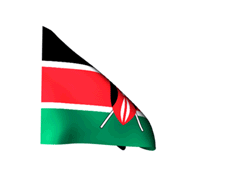CHEQUE BOUNCING

STEPS TO BE CONSIDERED IN CASE OF CHEQUE BOUNCING
Cheque is a negotiable instrument drawn upon a specified banker expressed to be payable on demand. A cheque involves three parties, first, the drawer who is author of the cheque, second, the payee in whose favour, the cheque is drawn and third, the drawee or payer bank who is directed to pay the amount.
Cases of cheque bouncing are common these days. Sometimes cheques bearing large amounts remain unpaid and are returned by the bank on which they are drawn.
Cheque bouncing is a Criminal Offence, which is governed by the Negotiable Instrument Act, 1881 and punishable under the same up to two years or with monetary penalty or with both.
These conditions must be fulfilled before going to court to file a suit against the drawer in cheque bouncing cases according to section 138 of the Negotiable Instrument Act, 1881:
- The cheque should have been drawn by the drawer on an account maintained by him.
- The cheque is issued towards discharge of a debt or legal liability.
- The cheque has to be presented to the bank within the six month from the date in which it is drawn or within the period of its validity.
- When a Cheque is dishonoured, a notice has to be given in writing to the drawer of the cheque within the thirty days from the receipt of the information from the bank regarding the return of the cheque as unpaid.
- That Notice should be sent by Registered post with acknowledgement receipt.
- The drawer has to make the payment of the said amount of money to the payee within the fifteen days of the receipt of the said notice.
- The complaint should be registered in a magistrate’s court within a month of the expiry of the notice period if no payment has been received within the fifteen days of the receipt of the said notice.
The following documents will be required in filing the suit:
- Complaint,
- Oath letter/Affidavit; and
- Photocopy of all the documents such as cheque, memo, notice copy, and acknowledgement receipts.
If the payee fails to file the complaint within thirty days, the complaint becomes barred by limitation of time. The jurisdictional magistrate court
may refuse to entertain such a belated complaint. However, if the payee has sufficient reasons to justify delay in filing the complaint, he may make an application before the magistrate along with the complaint, to explain the reasons for delay and seek condoning of delay. Cognizance of the complaint may be taken if the Court is satisfied that the payee had sufficient cause for not making the complaint within the prescribed period.
Cause of action arose on the date of receiving “Cheque Return Memo” from the bank. When a cheque is dishonoured the drawee bank immediately issues a ‘Cheque Return Memo’ to the banker of the payee mentioning the reason for non-payment. The payee’s banker then gives the dishonoured cheque and the memo to the payee.
If a notice is not given within 1 month after the cheque has bounced, then the check needs to be presented in the bank again and a notice can then be issued after the check bounces subject to the condition that it has to be submitted in the bank within its validity period (A cheque expires after six months).
Dishonour of a cheque due to stop payment is also covered under Section 138 of the NI Act.
Presentation of the cheque at the request of the drawer after the demand notice has been sent will and consequent dishonour of the cheque will not mean that the drawer’s time limit under the notice has increased.
A cheque issued as a gift/donation/any other obligation, will not be covered under Section 138 of the Act.
Parul
Senior Associate
The Indian Lawyer




































krunker aimbot
Jun 6, 2019, 12:41 pmJust wanna input on few general things, The website layout is perfect, the articles is very superb : D.